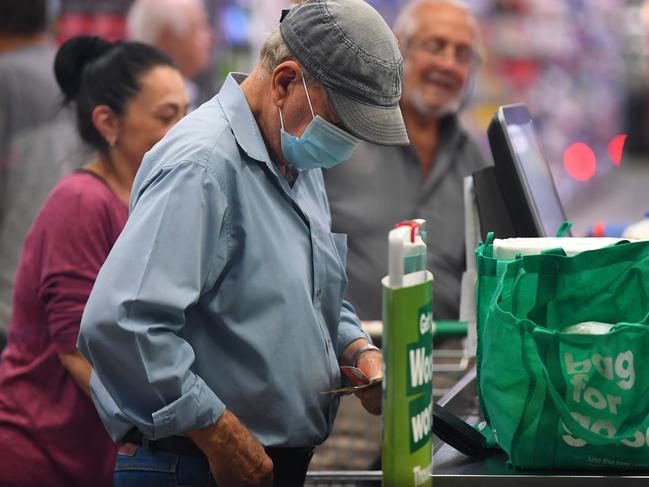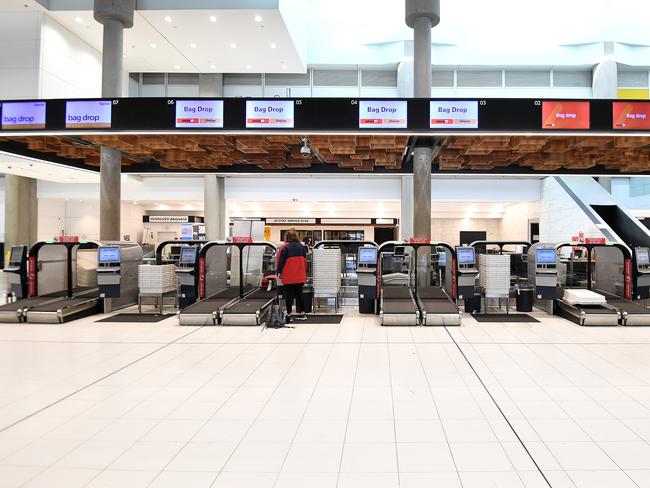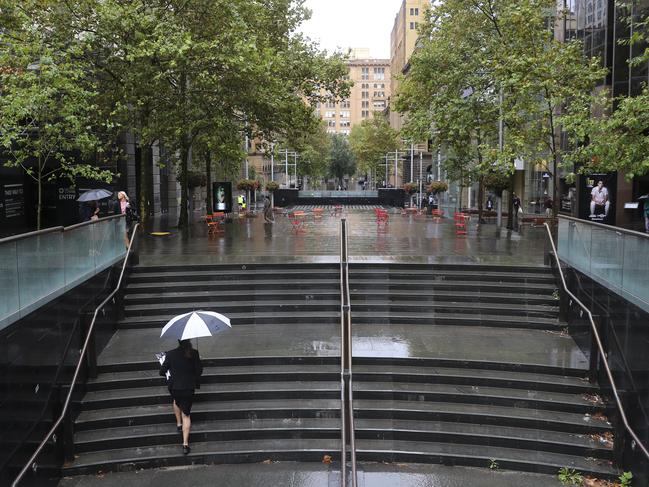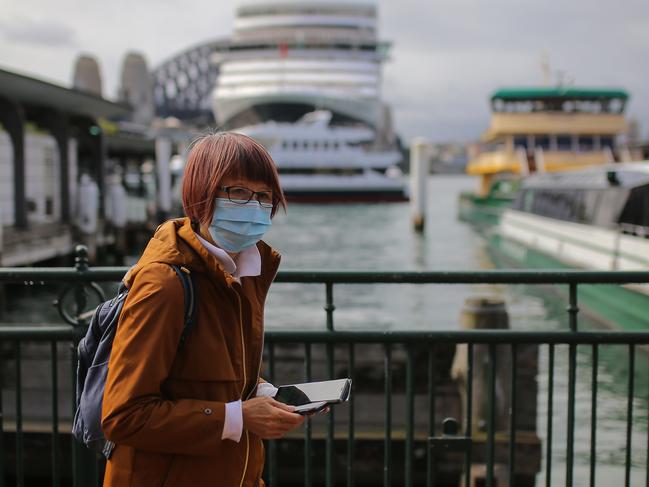Scott Morrison’s COVID-19 adviser reveals travel bans and social distancing could remain until at least October
An expert adviser to Scott Morrison says travel bans and social distancing will stay until at least October, amid a forecast Australia faced almost two million cases of COVID-19 by Anzac Day. Track the infection rate with the COVID-19 calculator.
Health
Don't miss out on the headlines from Health. Followed categories will be added to My News.
- There’s hope: China reports no new COVID-19 cases
- Doctor reveals eerie life on the coronavirus frontline
Exclusive: A key adviser to Prime Minister Scott Morrison credited travel restrictions and social distancing as key to controlling the coronavirus – and added the bans are here to stay until at least October.
Australia has slowed its epidemic through isolation and contact tracing yet whether the success will hold or not is unclear and Professor Jodie McVernon said we may have to live with restrictions longer than other countries.
With case counts and deaths soaring in Europe, Australia has so far avoided a European style lockdown from COVID-19 as we try to control the spread of the virus using travel restrictions, quarantine, case tracing and social distancing.
Perversely, the longer those restrictions apply the greater our success will have been in containing the virus said Doherty Institute’s epidemiologist Professor McVernon.

Professor McVernon is part of a crack team of epidemiologists providing constant advice to the Prime Minister.
“The difficult message here is that the extent of our success is going to be measured by how much longer we can make this (adopting the restriction) … which is a difficult,” she said.
In an exclusive interview with News Corp, Professor McVernon said that dragging out the restrictions would mean “we will have flattened the peak”.
And this means we would have kept the health system going.
However, she has refused to reveal the outcomes of the modelling the forecasting group has given the government that would reveal how many Australians will get the virus.
“I will not give you a number to tell you where this is going or how bad it’s going to be, because we have also just implemented a suite of interventions,” she said.
And she explains that, unlike Italy, many of our COVID-19 patients are not local transmission cases but people who have brought the virus in from overseas.
Data shows nearly 240 of Australia’s COVID-19 cases were in people coming to Australia from overseas, 78 were local community transmissions, there is no detailed breakdown on the origin of a further 206 cases.

RELATED NEWS:
Photos that prove you don’t need to panic buy toilet paper
COVID-19 hoaxes, scams flood Facebook
Smart ways to keep kids learning while stuck at home
Musicians champion streaming binge to tackle COVID-19 hit
Countries like Italy which suffer a massive spike in infections will get over coronavirus faster because more people will be immune but in the meantime they will suffer more deaths and their health system will be overwhelmed and more people will die.
The National Press Club was told this week that if the hospital system became overwhelmed the death toll from COVID-19 would be five times higher than if it could meet demand.
By contrast with Italy, Australia had started with something that’s sustainable and we can ramp up our response as the virus spreads and try to normalise new behaviours needed to control the spread of the virus, she said.
“We do need to be able to keep society going because we’re not just about one disease. And it’s not just about the economy.
“There are families out there who are being affected by the changes that are being made and we need to be able to support all of those individuals.”
Asked why Australia had not announced a full scale lockdown like European countries she said infection rates here were lower and they were problematic to unravel.
“What’s the endgame? How long? How hard?” she asked.
“If the lockdown went for the 18 months it took to develop a vaccine that was a very high risk strategy and there could be social and economic collapse.
“Then there was the problem of what happens when you lift the lockdown.
“Will people have the confidence to step out of their houses? What are you going to tell the public that’s going to reassure them at that time?”
It would also be difficult to make a vaccine while all of our societies were in lockdown, she said.
“Who’s going to work to make the vaccine? So I mean, to get to the solutions, we have to have some degree of continuity,” she said.
By going into lockdown European nations had made the only decision they could make at the time “that was about trying to get on top of something that was already out of control,” she said.
“When they go away from lockdown they won’t be going to business as usual,” she said.
AUSTRALIA HAS SLOWED THE PANDEMIC – FOR NOW
Isolation, travel bans and now closed borders – Australia has emerged as a sign of international hope amid the COVID-19 pandemic.
Australia was looking down the barrel of almost two million cases of COVID-19 by Anzac Day based on a 24 per cent per day increase in cases earlier this week.
However, new infection control measures rolled out from Monday appear to have been successful in cutting the rate of infection down to just 22 per cent by Thursday.
On current projections this is likely to slash forecasts of the number of people infected down to 1.3 million by Anzac Day.
In an incredible turnaround, it appears we have greatly slowed the epidemic particularly by extensive efforts to isolate infected people and trace and quarantine their contacts.
News Corp today unveils a COVID-19 calculator that will both forecast future infections and measure whether we are doing enough to control the virus.
The frightening exponential increase in COVID-19 cases last week forced the government to act quickly to introduce tough new measures.

Travellers entering Australia were quarantined for two weeks, sporting and cultural events with over 500 people were banned and social distancing was encouraged.
Since then even tougher travel bans, restrictions on visitors to the elderly and other measures have been announced to flatten the curve of infection.
An infection rate of two million people will overwhelm the health system with around 280,000 people suffering severe forms of the disease based on what happened in China.
And a further 100,000 people would have required an ICU bed and we only have 2200 nationally.
University NSW academic and primary health expert Dr Michael Tam said it was difficult to project where an epidemic was travelling into the future.
“A tiny difference in assumptions can make an absolutely massive difference and the longer we forecast into the future the less confident we will be,” he said.

In a Facebook post this week he estimated: “Following the trend, the number of confirmed COVID-19 cases in Australia will likely be in the thousands, possibly ten-thousand in a fortnight”.
“If 10 per cent of the population was sick the hospital system would melt down and people would be dying in their homes.”
However, if Australia was as successful at controlling the virus as Korea we could cut the growth rate to one per cent.
“I think the government should be acting more quickly in terms of reducing transmission,” he said.
ANU epidemiologist Professor Peter Collingnon said models were only as good as the assumptions put into them and we could be missing 90 per cent of COVID-19 infections because many people had mild symptoms.
He agreed Australia needed to do more quickly to control the virus including encouraging people over the age of 70 to stay at home to make sure they did not get infected.
Originally published as Scott Morrison’s COVID-19 adviser reveals travel bans and social distancing could remain until at least October


